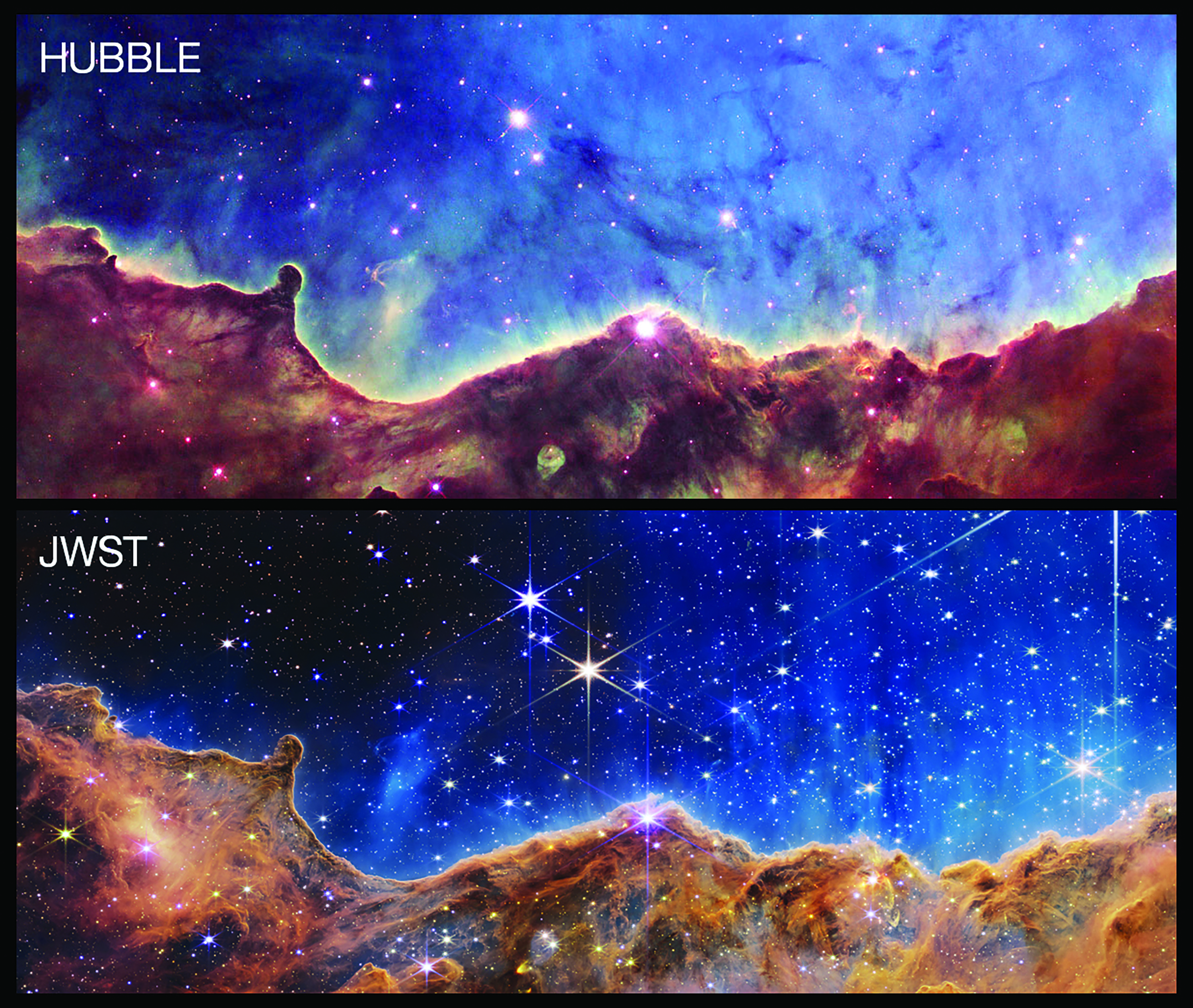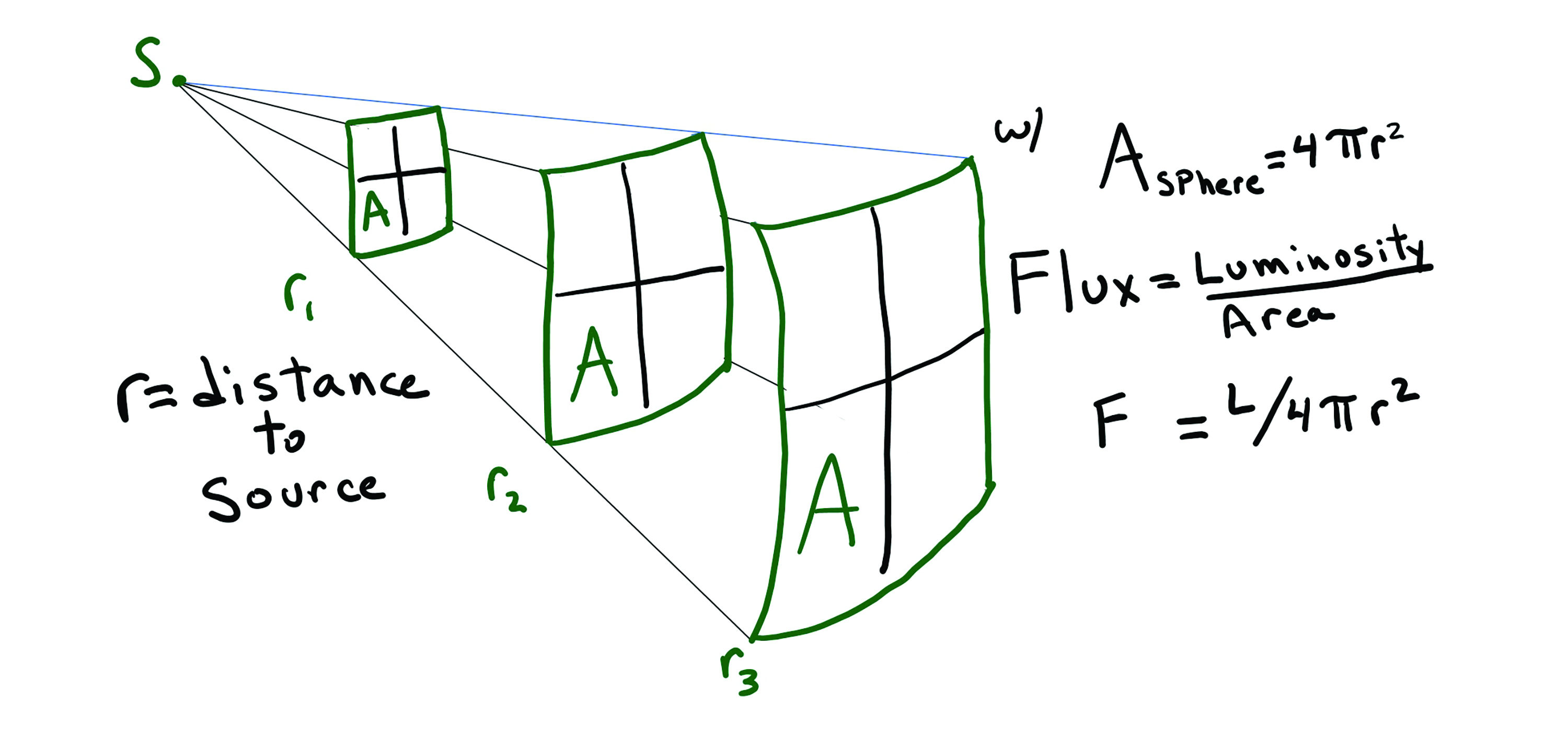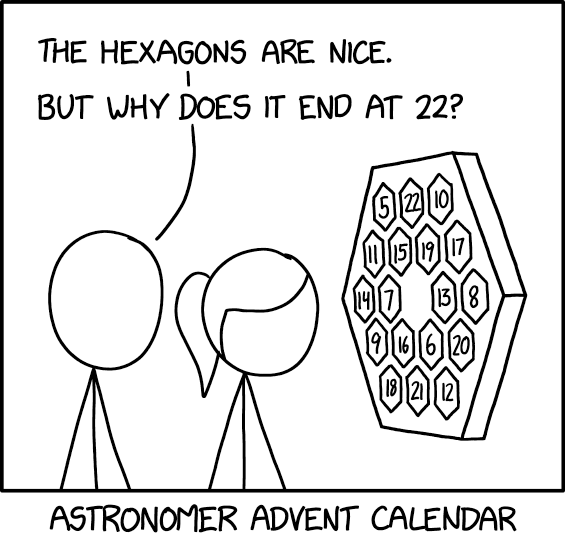Watt’s Up JWST?
Spring
2023
Physics Puzzler
Watt’s Up JWST?
Brad Conrad, Director of SPS and Sigma Pi Sigma
You’ve likely seen some of the record-breaking pictures taken by NASA’s new James Webb Space Telescope (JWST). This telescope is not just a replacement for the much older Hubble Space Telescope (HST); in many ways it’s a successor.1 Some like this term because while Hubble captured some of the most iconic pictures of deep space ever taken, when placed next to JWST images, the difference in detail is striking.
When the JWST and HST images are side by side, the JWST is considered by many to be a better telescope. What makes the difference?
A little digging on NASA’s website reveals that JWST has a much larger primary mirror than HST. HST’s is 2.4 m in diameter, while JWST’s is 6.5 m—that’s about 6 times the area or 2.5 times the diameter of HST.4
As the surface that is collecting light, the area of the mirror is important.
There is another very important difference—the two telescopes sample light across different ranges of wavelengths: HST goes from 0.8 µm to 2.5 µm in wavelength, while the JWST was designed to observe 0.6 µm to 28 µm. For reference, visible light for most people is about 0.38 µm (violet) to 0.7 µm (deep red).
Even though humans can’t see infrared light (unlike mosquitoes), the JWST can observe in the infrared wavelengths with an unprecedented sensitivity. At these longer wavelengths, astronomers will be able to observe developing planetary systems and the first galaxies that formed after the big bang. Longer wavelengths also go through dust clouds more effectively.
“You can't really see blue light with a yellow mirror!”
– Dr. John Mather, Physics Nobel Prize winner
and senior project scientist on the JWST
In short, JWST can see much farther into the infrared (these are longer wavelengths than visible light), and the telescopes have different sensitivities at different wavelengths. We can see exactly how they differ by looking at a super-cool plot from the Space Telescope Science Institute.
Figure 3 compares the minimum flux different telescopes can measure at a given wavelength for the same amount of time, in this case 10,000 seconds. It lets us directly compare estimates of how sensitive each telescope is to different wavelengths. For example, the HST is much less sensitive than JWST at longer wavelengths, as is evident by the increasing flux needed to detect a point source (dark blue line). When compared to Hubble, we can see that JWST has a much lower noise floor and is hence much more sensitive near 2 µm. (If you are really excited about this, NASA has very cool tools that let you explore the sensitivity of JWST in various modes of operation.6)
What’s flux again? See Fig. 4. Now, back to the puzzler.
From the plot, how much more sensitive is JWST to the deep red visible light than HST?
Given that, if we wanted a telescope 10 times more sensitive than JWST and all we could change was the size of the primary mirror, how much larger would we need to make it?
Puzzler-3-chart.jpg

Figure 3: This plot shows the faintest flux of light emitted by a point source that different telescopes can detect, by wavelength. It's measured over 10,000 seconds at a signal-to-noise ratio of 10. On the left axis, flux is given in units of Jansky, where 1 Jy = 10-26 Watts per area per wavelength. On the right, flux is given by AB magnitude. Note that two JWST instruments are shown, NIRCam and MIRI, that operate over different wavelengths (red lines). Credit: Space Telescope Science Institute.5




